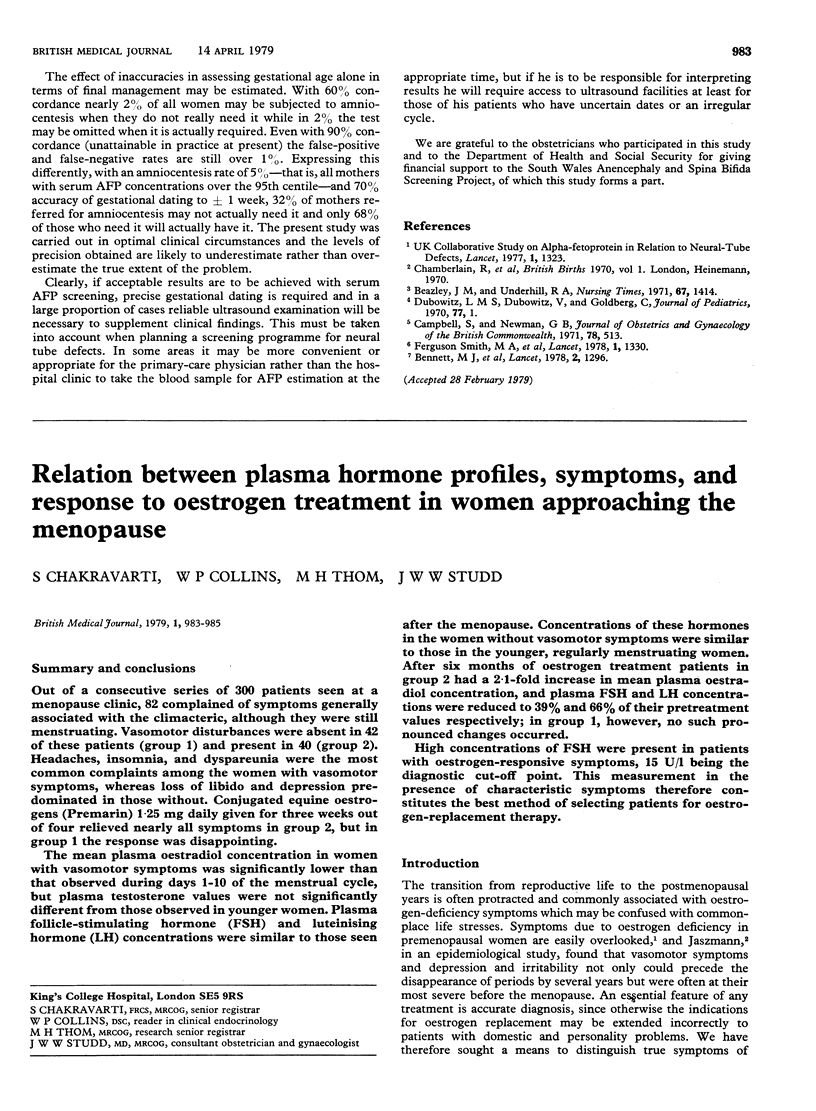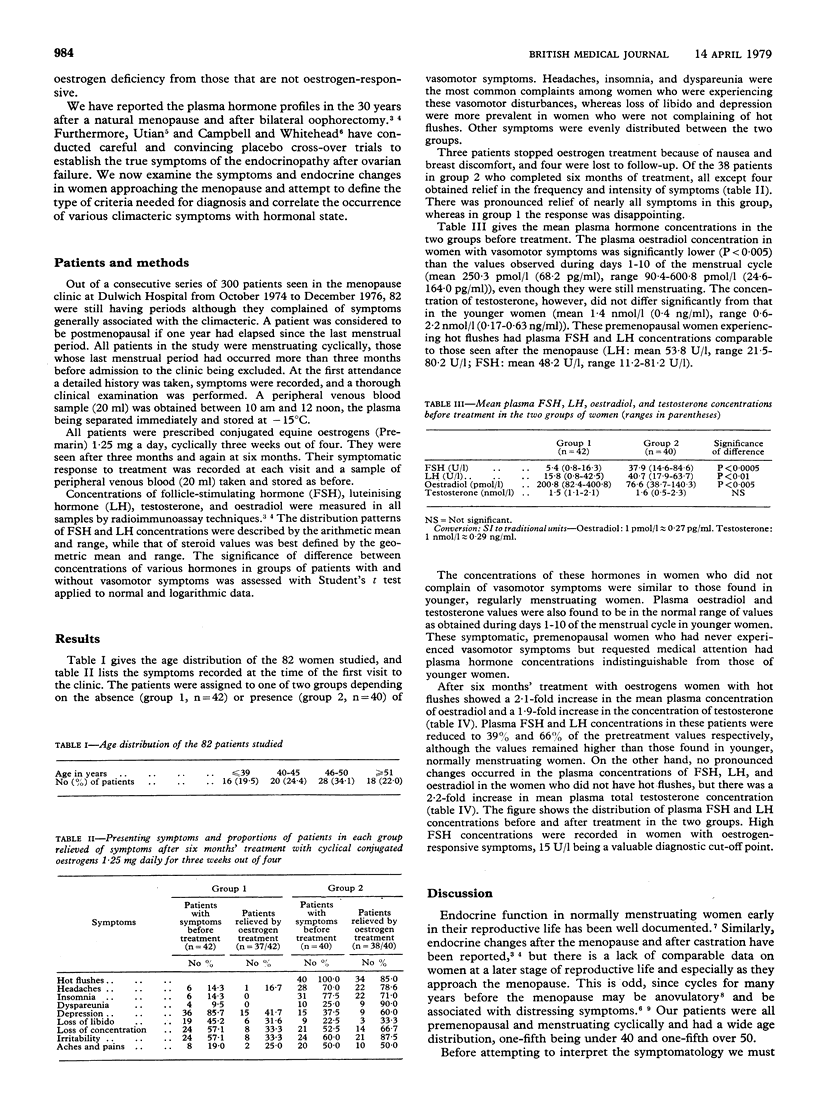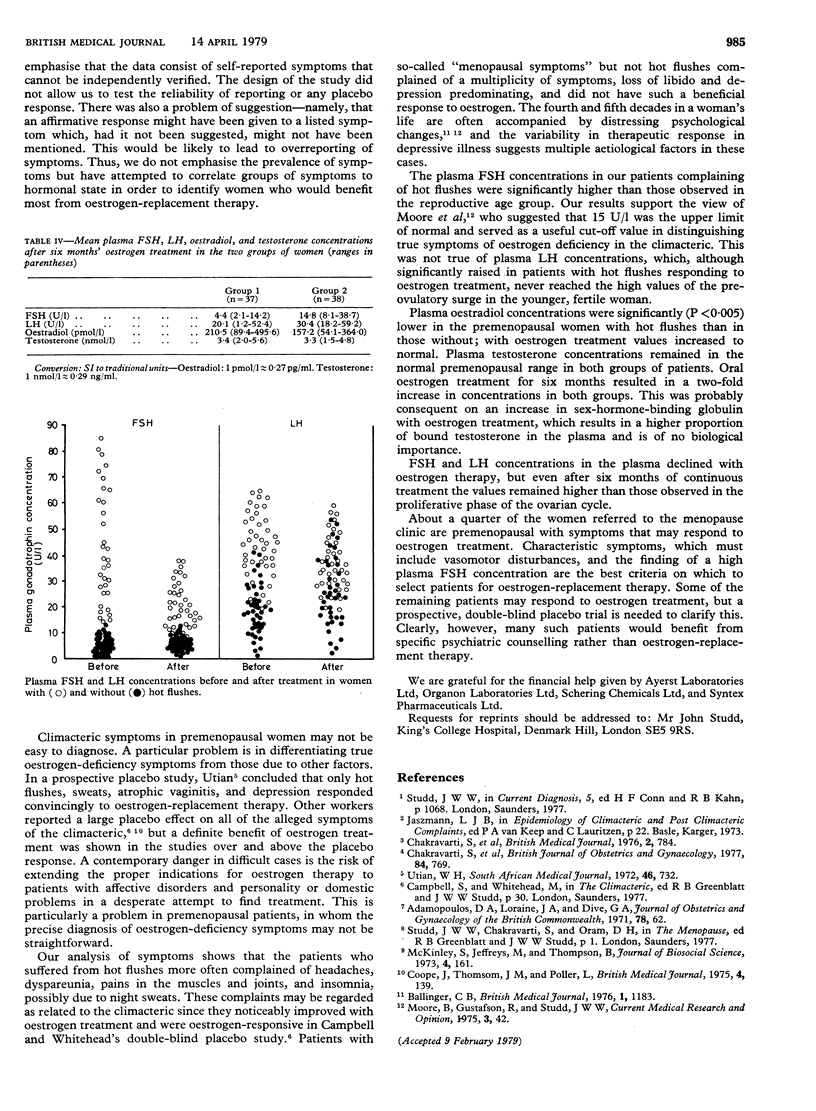Abstract
Out of a consecutive series of 300 patients seen at a menopause clinic, 82 complained of symptoms generally associated with the climacteric, although they were still menstruating. Vasomotor disturbances were absent in 42 of these patients (group 1) and present in 40 (group 2). Headaches, insomnia, and dyspareunia were the most common complaints among the women with vasomotor symptoms, whereas loss of libido and depression predominated in those without. Conjugated equine oestrogens (Premarin) 1.25 mg daily given for three weeks out of four relieved nearly all symptoms in group 2, but in group 1 the response was disappointing. The mean plasma oestradiol concentration in women with vasomotor symptoms was significantly lower than that observed during days 1-10 of the menstrual cycle, but plasma testosterone values were not significantly different from those observed in younger women. Plasma follicle-stimulating hormone (FSH) and luteinising hormone (LH) concentrations were similar to those seen after the menopause. Concentrations of these hormones in the women without vasomotor symptoms were similar to those in the younger, regularly menstruating women. After six months of oestrogen treatment patients in group 2 had a 2.1-fold increase in mean plasma oestradiol concentration, and plasma FSH and LH concentrations were reduced to 39% and 66% of their pretreatment values respectively; in group 1, however, no such pronounced changes occurred. High concentrations of FSH were present in patients with oestrogen-responsive symptoms, 15 U/1 being the diagnostic cut-off point. This measurement in the presence of characteristic symptoms therefore constitutes the best method of selecting patients for oestrogen-replacement therapy.
Full text
PDF


Selected References
These references are in PubMed. This may not be the complete list of references from this article.
- Ballinger C. B. Psychiatric morbidity and the menopause: clinical features. Br Med J. 1976 May 15;1(6019):1183–1185. doi: 10.1136/bmj.1.6019.1183. [DOI] [PMC free article] [PubMed] [Google Scholar]
- Chakravarti S., Collins W. P., Forecast J. D., Newton J. R., Oram D. H., Studd J. W. Hormonal profiles after the menopause. Br Med J. 1976 Oct 2;2(6039):784–787. doi: 10.1136/bmj.2.6039.784. [DOI] [PMC free article] [PubMed] [Google Scholar]
- Chakravarti S., Collins W. P., Newton J. R., Oram D. H., Studd J. W. Endocrine changes and symptomatology after oophorectomy in premenopausal women. Br J Obstet Gynaecol. 1977 Oct;84(10):769–775. doi: 10.1111/j.1471-0528.1977.tb12491.x. [DOI] [PubMed] [Google Scholar]


